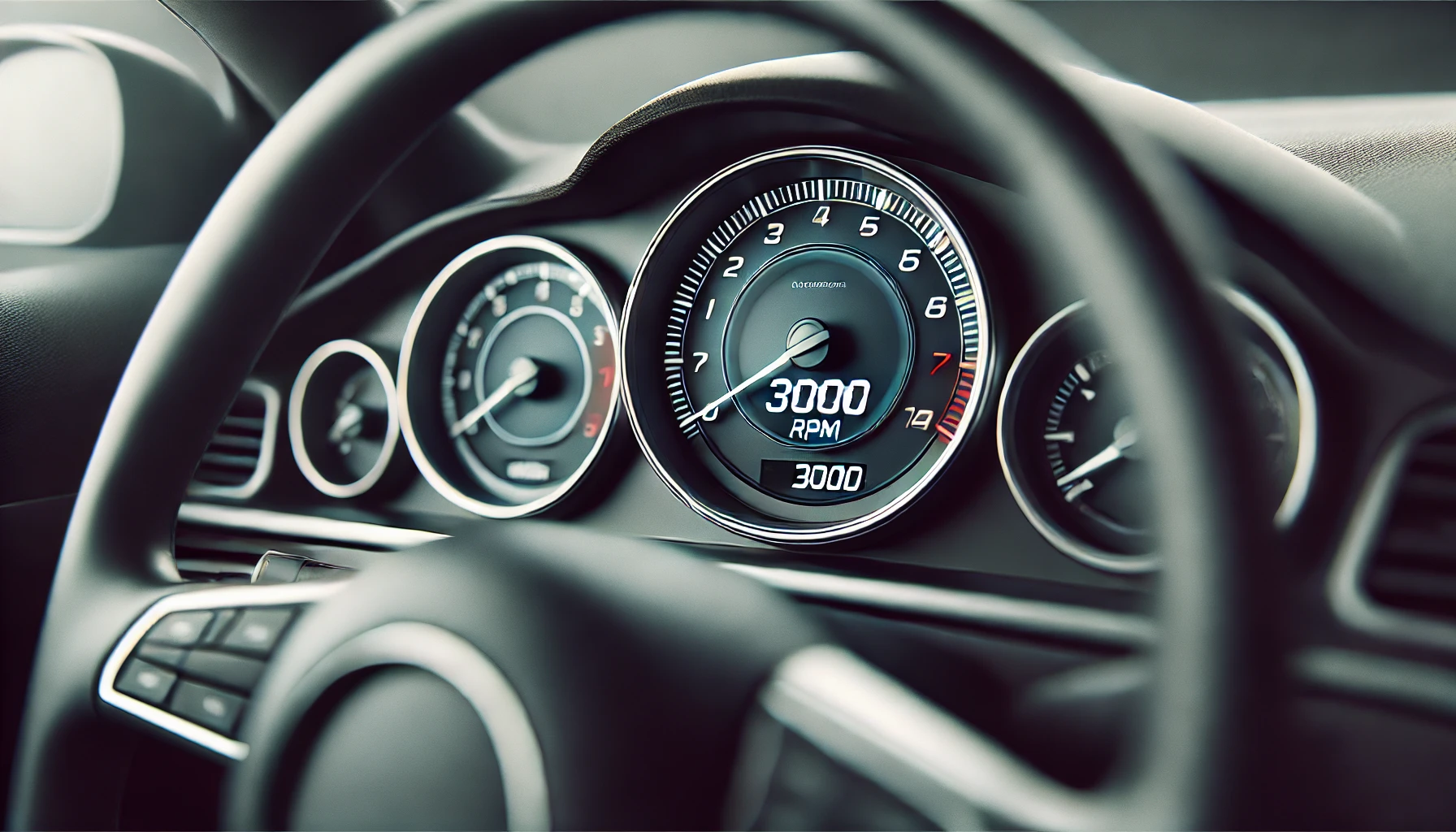RPM stands for Revolutions Per Minute. It measures how many times the engine’s crankshaft makes a full rotation every minute and, consequently, how many times each piston moves up and down in its cylinder. RPM is a crucial indicator of engine performance and is typically displayed on your car’s dashboard via the tachometer.
Why is RPM Important?
Understanding RPM can help you drive more efficiently and maintain your vehicle better. Here are some reasons why RPM matters:
Fuel Efficiency
Keeping your RPM within an optimal range can improve fuel efficiency. Generally, engines run most efficiently at lower RPMs.
Engine Longevity
High RPMs for extended periods can cause more wear and tear on your engine, leading to potential damage and decreased longevity.
Performance
Different RPM ranges can affect your car’s performance. For example, higher RPMs might be needed for better acceleration, while lower RPMs are ideal for cruising.
How to Read the Tachometer
The tachometer on your dashboard shows the engine RPM. It usually has numbers ranging from 0 to around 8 or 9, with each number representing 1,000 RPM. For example, if the needle points to 3, it means the engine is running at 3,000 RPM.

Photo by Carlos Egea del Moral
Optimal RPM Ranges
For most cars, an RPM range between 1,500 and 2,500 is considered optimal for fuel efficiency and engine health. However, this can vary depending on the vehicle and driving conditions. Here’s a basic guide:
- Idle RPM: When your car is stationary, the RPM should be around 600-1,000.
- Cruising RPM: For steady driving at moderate speeds, aim for 1,500-2,500 RPM.
- Acceleration RPM: During acceleration, the RPM might rise to 3,000-4,000 or higher, depending on the power needed.
When to Pay Attention to RPM
Shifting Gears
For manual transmission cars, knowing the optimal RPM for shifting gears can improve driving smoothness and fuel efficiency. Shift up around 2,500-3,000 RPM and shift down before the engine drops below 1,500 RPM.
Troubleshooting
Unusual RPM behavior can indicate engine problems. For instance, if your car idles at an unusually high or low RPM, it might need a tune-up or there could be a mechanical issue.
Driving Conditions
In certain conditions, such as towing or driving up steep hills, keeping an eye on RPM can help ensure you’re not overworking your engine.
Frequently Asked Questions (FAQs)
Why does my car’s RPM fluctuate while driving?
Fluctuating RPMs can indicate several issues, such as a problem with the idle air control valve, a vacuum leak, or a faulty sensor. It’s best to have a mechanic diagnose the issue to prevent potential engine damage.
Can high RPMs damage my engine?
Consistently driving at high RPMs can cause more wear and tear on the engine, potentially leading to overheating and premature engine failure. It’s best to avoid prolonged periods of high RPM driving to maintain engine health.
How can I improve my car’s fuel efficiency with RPM?
To improve fuel efficiency, try to keep your car’s RPM within the optimal range (usually 1,500 to 2,500 RPM) during regular driving. Avoid rapid acceleration and maintain a steady speed to keep the RPM low.
What causes a car to idle at a high RPM?
A car may idle at a high RPM due to several reasons, including a malfunctioning idle air control valve, a vacuum leak, or issues with the throttle body. These problems should be checked by a professional mechanic.
Is it bad to drive at low RPMs?
Driving at very low RPMs can cause the engine to lug, leading to inefficient fuel use and increased strain on the engine. It’s important to find a balance and not let the RPM drop too low during driving.
How do I know when to shift gears in a manual transmission car?
In a manual transmission car, you should generally shift up when the RPM reaches 2,500-3,000 and shift down before the engine drops below 1,500 RPM. This can vary depending on the specific vehicle and driving conditions.
Does RPM affect the car’s speed?
Yes, RPM affects the car’s speed. Higher RPMs usually correspond to higher speeds, but the relationship also depends on the gear the car is in. Higher gears at the same RPM will result in higher speeds compared to lower gears.
Can I rely solely on RPM to judge when to shift gears?
While RPM is a good indicator of when to shift gears, you should also consider other factors like the sound of the engine, the car’s speed, and driving conditions. Experience and familiarity with your vehicle will help you make better shifting decisions.
Conclusion
RPM is a vital aspect of your car’s operation, influencing everything from fuel efficiency to engine health. By understanding what RPM is and how to monitor it, you can drive more efficiently and keep your car in better condition. Always refer to your vehicle’s manual for specific recommendations regarding optimal RPM ranges for your car.
